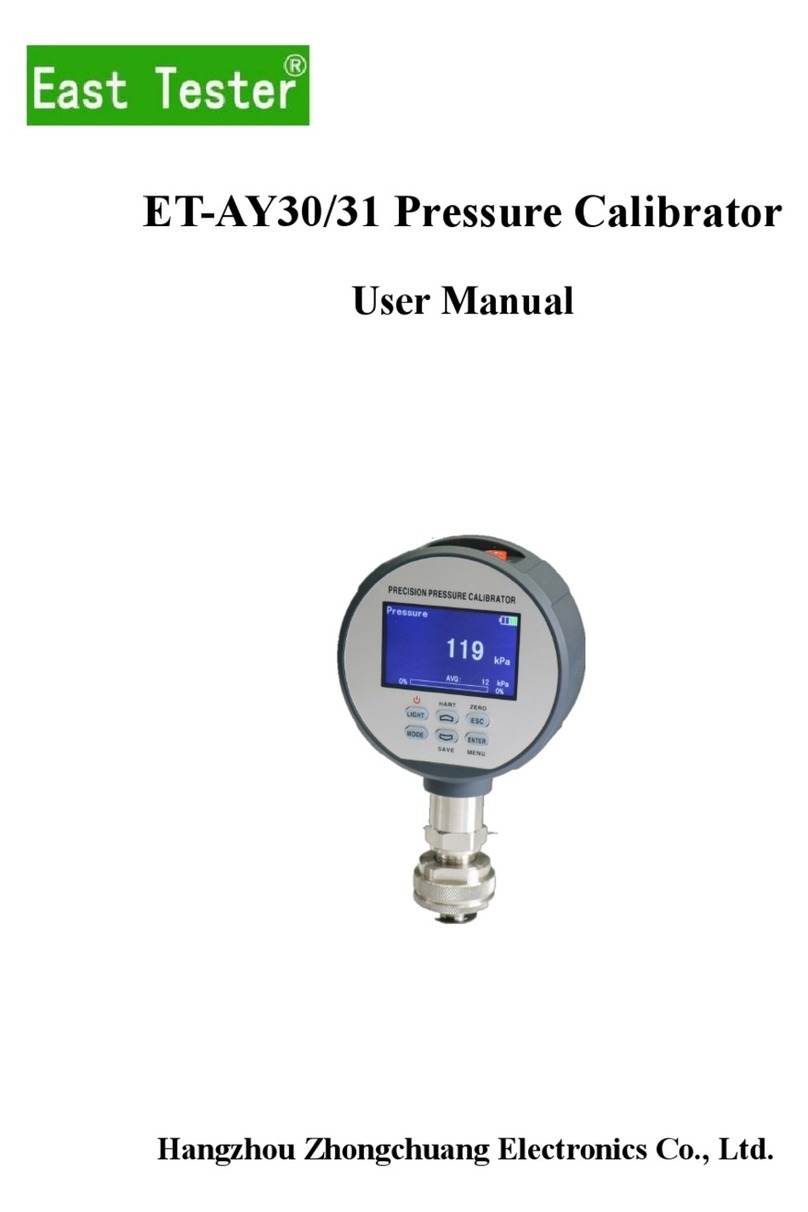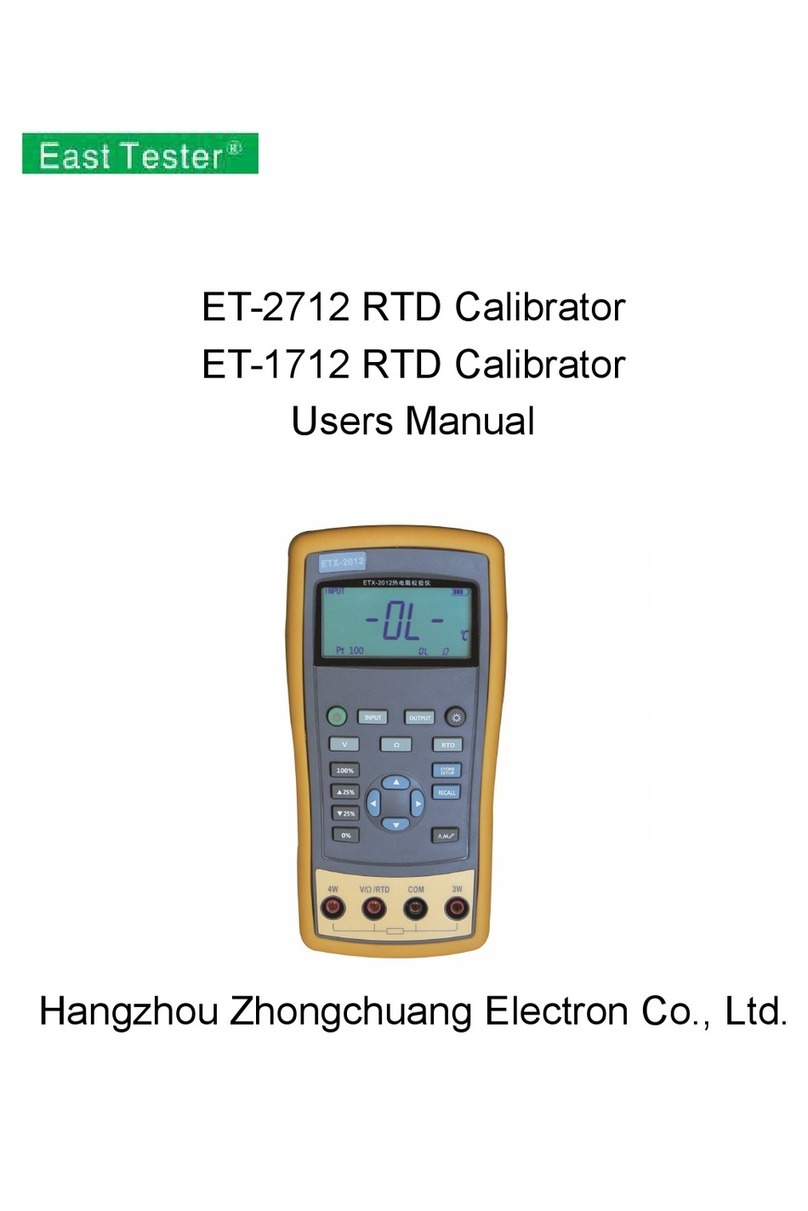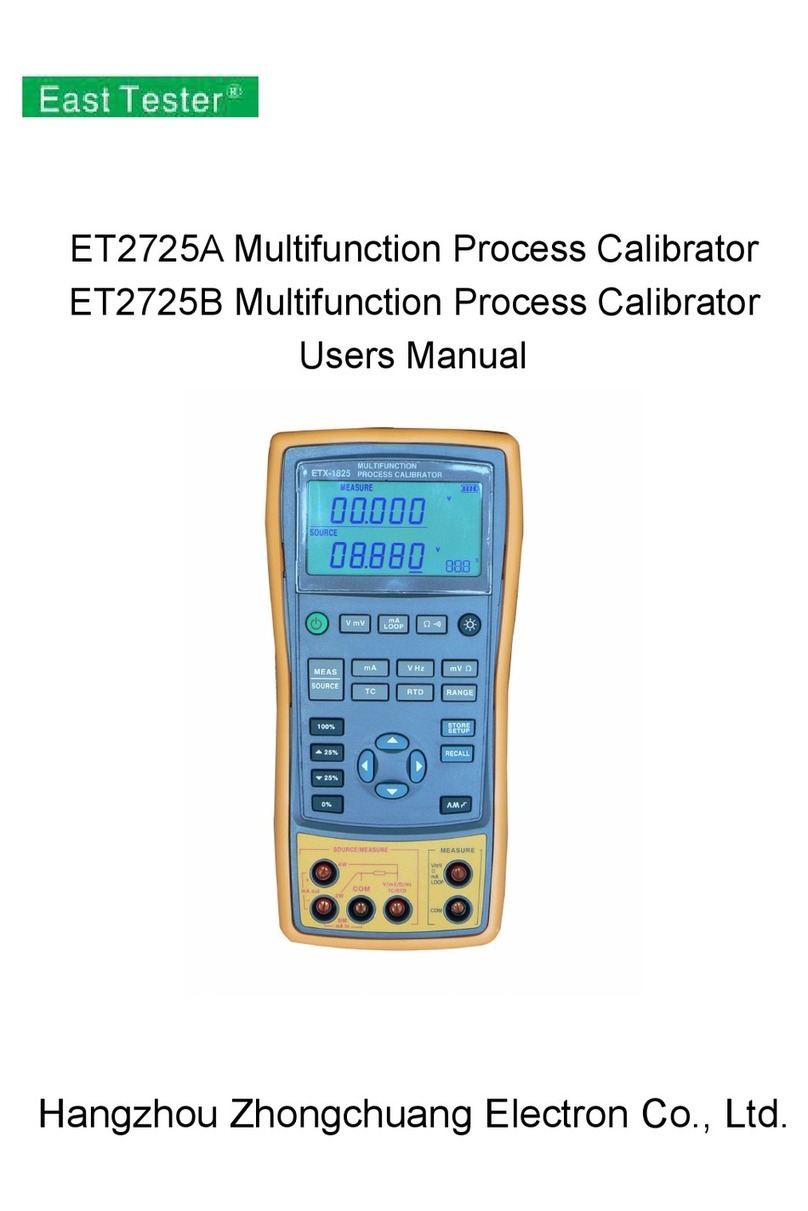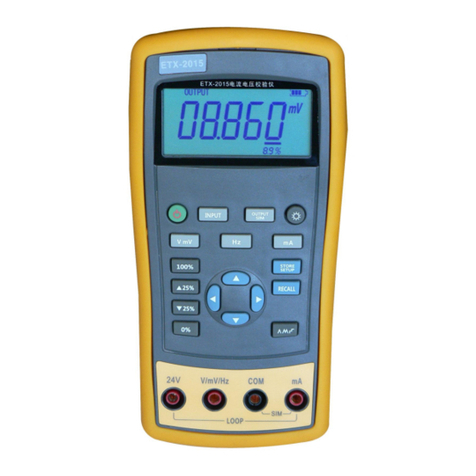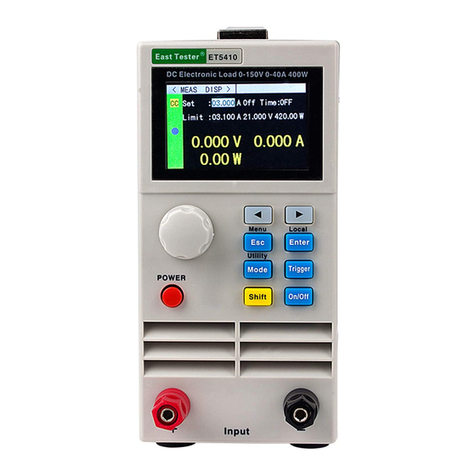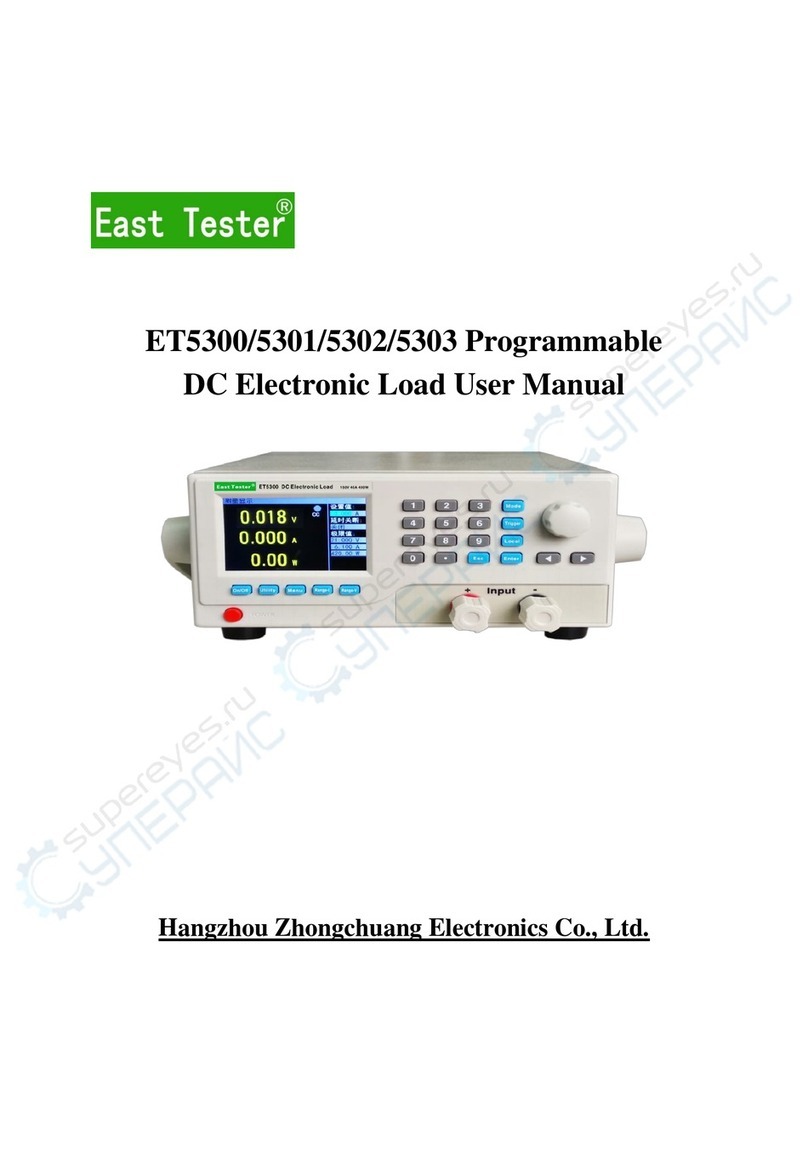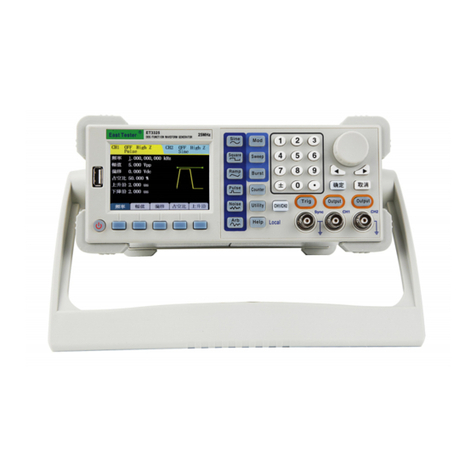
Content
1. Quick Start Guide...................................................................................................... 1
1.1 Front panel LCD display..........................................................................................1
1.2 Front panel key.........................................................................................................1
1.3 Key Description....................................................................................................... 2
1.4 Numeric parameter settings......................................................................................2
2.Function operation................................................................................................... 3
2.1 Remote/local switching............................................................................................3
2.2 System Setup............................................................................................................3
2.3 Load Setup............................................................................................................... 4
2.4 Basic mode............................................................................................................... 4
2.4.1 Constant current mode.................................................................................. 4
2.4.2 Constant voltage mode..................................................................................5
2.4.3 Constant resistance mode..............................................................................5
2.4.4 Constant power mode....................................................................................6
2.4.5 Constant current to constant voltage mode................................................... 6
2.4.6 Constant resistance to constant voltage mode...............................................6
2.5 Tran Test.................................................................................................................. 7
2.6 List Test....................................................................................................................8
2.7 Scan Test................................................................................................................ 11
2.8 Battery Test............................................................................................................ 12
2.9 LED Test................................................................................................................ 13
2.10 Short Circuit Test................................................................................................. 14
2.12 Protection function............................................................................................... 14
2.13 Trigger function................................................................................................... 14
2.14 Qualification test.................................................................................................. 14
2.15 Other system settings........................................................................................... 15
2.15.1 Key-Lock Function................................................................................... 15
2.16 Communication port and External expansion port...............................................15
2.16.1 Communication port..................................................................................15
2.16.2 Expansion port.......................................................................................... 16
2.16.3 Current monitoring terminal..................................................................... 16
Technical specifications............................................................................................... 17
